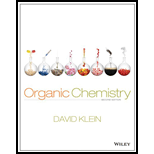
(a)
Interpretation: Identification of the number of chirality centers in the given set of compounds
Concept Introduction:
There are two conditions to get a compound as a chiral. If an atom is attached with four different groups, that atom is having a chiral center. This is the first condition. The second one is that the compound doesn’t have any elements of symmetry. i.e., it should not have plane of symmetry and center of symmetry. If any one condition or both the conditions are possible in a compound, that compound is able to exhibit a chirality center. For example, the following compound has a chiral carbon.

To find: Identify the number of chirality centers in the given compound (a)
Define a chirality center
(b)
Interpretation: Identification of the number of chirality centers in the given set of compounds
Concept Introduction:
There are two conditions to get a compound as a chiral. If an atom is attached with four different groups, that atom is having a chiral center. This is the first condition. The second one is that the compound doesn’t have any elements of symmetry. i.e., it should not have plane of symmetry and center of symmetry. If any one condition or both the conditions are possible in a compound, that compound is able to exhibit a chirality center. For example, the following compound has a chiral carbon.

To find: Identify the number of chirality centers in the given compound (b)
Define a chirality center
(c)
Interpretation: Identification of the number of chirality centers in the given set of compounds
Concept Introduction:
There are two conditions to get a compound as a chiral. If an atom is attached with four different groups, that atom is having a chiral center. This is the first condition. The second one is that the compound doesn’t have any elements of symmetry. i.e., it should not have plane of symmetry and center of symmetry. If any one condition or both the conditions are possible in a compound, that compound is able to exhibit a chirality center. For example, the following compound has a chiral carbon.

To find: Identify the number of chirality centers in the given compound (c)
Define a chirality center
Want to see the full answer?
Check out a sample textbook solution
Chapter 23 Solutions
Organic Chemistry
 ChemistryChemistryISBN:9781305957404Author:Steven S. Zumdahl, Susan A. Zumdahl, Donald J. DeCostePublisher:Cengage Learning
ChemistryChemistryISBN:9781305957404Author:Steven S. Zumdahl, Susan A. Zumdahl, Donald J. DeCostePublisher:Cengage Learning ChemistryChemistryISBN:9781259911156Author:Raymond Chang Dr., Jason Overby ProfessorPublisher:McGraw-Hill Education
ChemistryChemistryISBN:9781259911156Author:Raymond Chang Dr., Jason Overby ProfessorPublisher:McGraw-Hill Education Principles of Instrumental AnalysisChemistryISBN:9781305577213Author:Douglas A. Skoog, F. James Holler, Stanley R. CrouchPublisher:Cengage Learning
Principles of Instrumental AnalysisChemistryISBN:9781305577213Author:Douglas A. Skoog, F. James Holler, Stanley R. CrouchPublisher:Cengage Learning Organic ChemistryChemistryISBN:9780078021558Author:Janice Gorzynski Smith Dr.Publisher:McGraw-Hill Education
Organic ChemistryChemistryISBN:9780078021558Author:Janice Gorzynski Smith Dr.Publisher:McGraw-Hill Education Chemistry: Principles and ReactionsChemistryISBN:9781305079373Author:William L. Masterton, Cecile N. HurleyPublisher:Cengage Learning
Chemistry: Principles and ReactionsChemistryISBN:9781305079373Author:William L. Masterton, Cecile N. HurleyPublisher:Cengage Learning Elementary Principles of Chemical Processes, Bind...ChemistryISBN:9781118431221Author:Richard M. Felder, Ronald W. Rousseau, Lisa G. BullardPublisher:WILEY
Elementary Principles of Chemical Processes, Bind...ChemistryISBN:9781118431221Author:Richard M. Felder, Ronald W. Rousseau, Lisa G. BullardPublisher:WILEY





